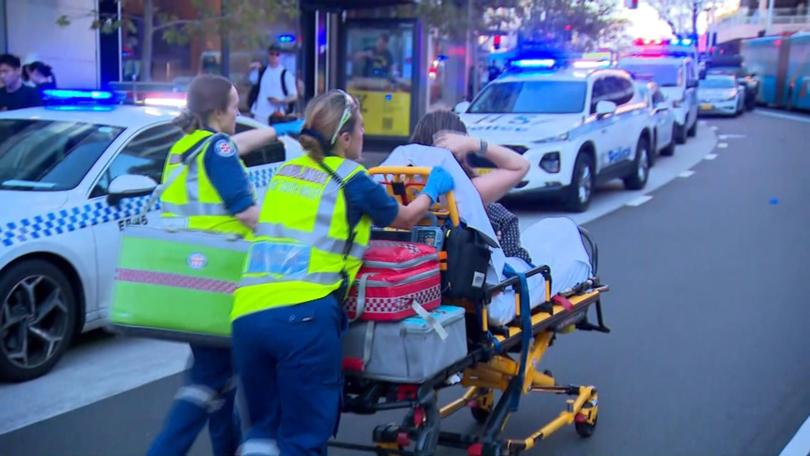Sydney stabbings have rocked Australia after several people killed in gruesome shopping centre attack

Mass shootings are extremely rare in Australia, but they’re more common than knife rampages of the kind that saw terrified shoppers running for their lives in Bondi.
Most mass killings in this country have been murder-suicides in which family members were killed before the perpetrator turned the weapon, usually a gun, on themselves.
Such an incident rocked Margaret River in 2018 when four children and three adults were shot dead, with the perpetrator being the grandfather, on a rural property at Osmington in 2018.
Sign up to The Nightly's newsletters.
Get the first look at the digital newspaper, curated daily stories and breaking headlines delivered to your inbox.
By continuing you agree to our Terms and Privacy Policy.The WA tragedy was widely reported at the time as the country’s worst mass shooting since the notorious Port Arthur massacre in 1996.
Port Arthur, of course, belonged to a different category.
Martin Bryant’s murder spree in the sleepy Tasmanian tourist town was indiscriminate. The 35 people who were slaughtered and the 23 who were wounded that autumn day had been going about their ordinary lives, sipping coffees and teas in a cafe or browsing in a nearby gift shop.
All but two of his victims were unknown to Bryant, as he emptied the magazines of two semi-automatic rifles. The rest were unluckily in the wrong place at the wrong time.
Saturday’s atrocity was in the same random, chaotic category. Being in the killer’s line of sight or path, was enough to be stabbed.
The Port Arthur slaying resulted in then prime minister John Howard introducing the National Firearms Agreement law, which significantly limited the ownership of semi-automatic and fully automatic weapons. It saw thousands of unlicensed firearms surrendered under a gun amnesty.
That there hasn’t been another massacre on the same scale or worse has been attributed to the firearms restrictions.
Bryant is serving 35 life sentences without the possibility of parole. Little explanation has been given for the massacre.
His psychiatrist opined Bryant was of limited intellectual ability and was an “oversensitive individual” who “attributed malevolence and aggression” to many around him, but he was not mentally ill at the time of the attack.
Despite the surge in terror attacks around the world in the 21st century, mass killings on Australian soil have been blessedly scarce.
Most recently, there were the Wieambilla shootings in December 2022 in which six people were killed.
Constables Matthew Arnold and Rachel McCrow were shot in cold blood by Nathaniel, Gareth and Stacey Train after the officers arrived at a rural property west of Brisbane. Another constable, Randall Kirk, was wounded while Const. Keely Brough fled into bushland, radioing for help.
Neighbour Alan Dare was also shot dead before the Trains were killed in a gunfight with specialist police later that night. The shootings were described as the country’s first religiously motivated terrorist attack.
In December, 2014, an armed militant laid siege to Sydney’s Lindt cafe, in Martin Place across from the Seven TV studios. Three people were killed and four others were wounded during a police raid at a cafe where gunman Man Monis was holding hostages
Oustide of bikie shootings, there were several mass killings in NSW and Victoria in the 1980s and 1990s.
In 1987, Julian Knight was only 19 when he embarked on a murderous spree at Clifton Hill, in Melbourne’s north east, during what became known as one of Australia’s bloodiest massacres at the time.
Knight, a failed student from Royal Military College, Duntroon, “indiscriminately” fired more than 100 rounds of ammunition from three weapons at passing motorists and police. Seven people died from gunshot wounds and 19 others were injured.
After a 30-minute police chase, Knight was arrested in the nearby suburb of Fitzroy. He was sentenced to seven concurrent life sentences.
In what was labelled the Strathfield massacre, seven people lost their lives in a gun and knife rampage in 1991.
Little-to-no reason was given for Wade Frankum’s horrifying killing spree in a mall in Sydney’s inner west about 20 years ago. During the attack at Strathfield Shopping Plaza on August 17, 1991, an ordinary day was turned upside down when Frankum, 33, hacked 15-year-old Roberta Armstrong to death with a big hunting knife. He then opened fire on shoppers with an automatic rifle, killing six others.
He took his own life on the rooftop garage of the plaza.
Police at the time said the motive for the attack was unknown and Frankum did not know his victims.
The inquest was told of his difficult upbringing, exposure to violent material throughout his life, and buying the rifle out of fears for his own protection.
In 1992, 45-year-old motor mechanic Malcolm Baker killed six people and an unborn child on the NSW Central Coast. The same night he walked into a police station, surrendered and handed over the 12-gauge pump-action shotgun he’d used. He was sentenced to life imprisonment for each of the six murders.
